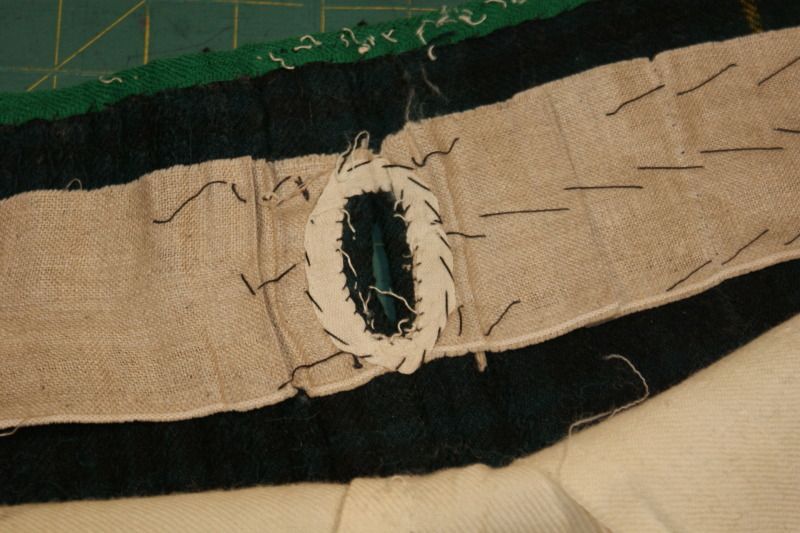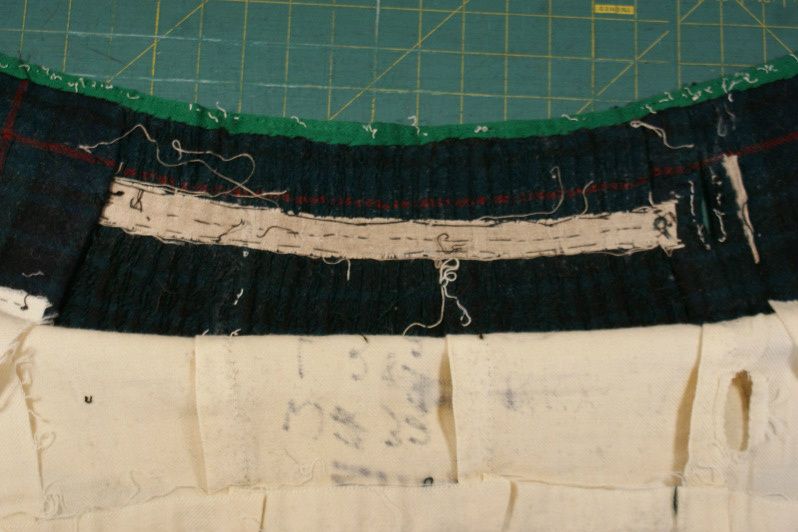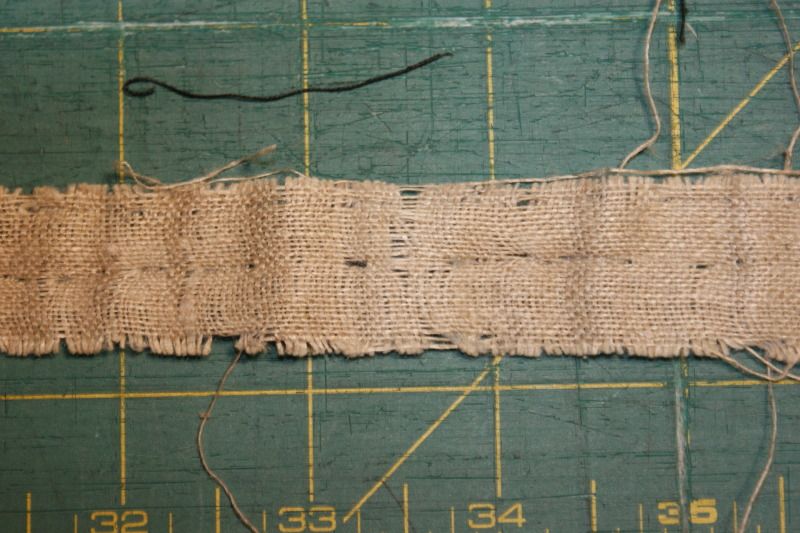The next thing to do is start to dissassemble the kilt.
Here I have un-stitched the liner and folded it back. I was careful not to damage the liner as I feel this is a special kilt and would like to re-use it.
The interfacing in this kilt is made of a cotton canvas not the hair canvas we use today. I see this often in kilts made in the UK.
After 60 years this interfacing is in remarkably good shape. You can see in this photo that while the interfacing is reletivavely intact some of the stitching has broken and come loose. This accounts for the looseness that allowed the distortion of the aprons.
One small detail I found at this stage is a length of bias tape sewn around the strap hole. This is just one small thing and would not have taken much time or effort but is just one of the pieces of evidence that this kilt was made with care.
the only thing I see that is different from a well made kilt of today is the width of the interfacing. You can see that it is only about 2 1/2" wide where today we install interfacings which are 6"-7" wide, or as wide as the Fell is tall..


























Bookmarks